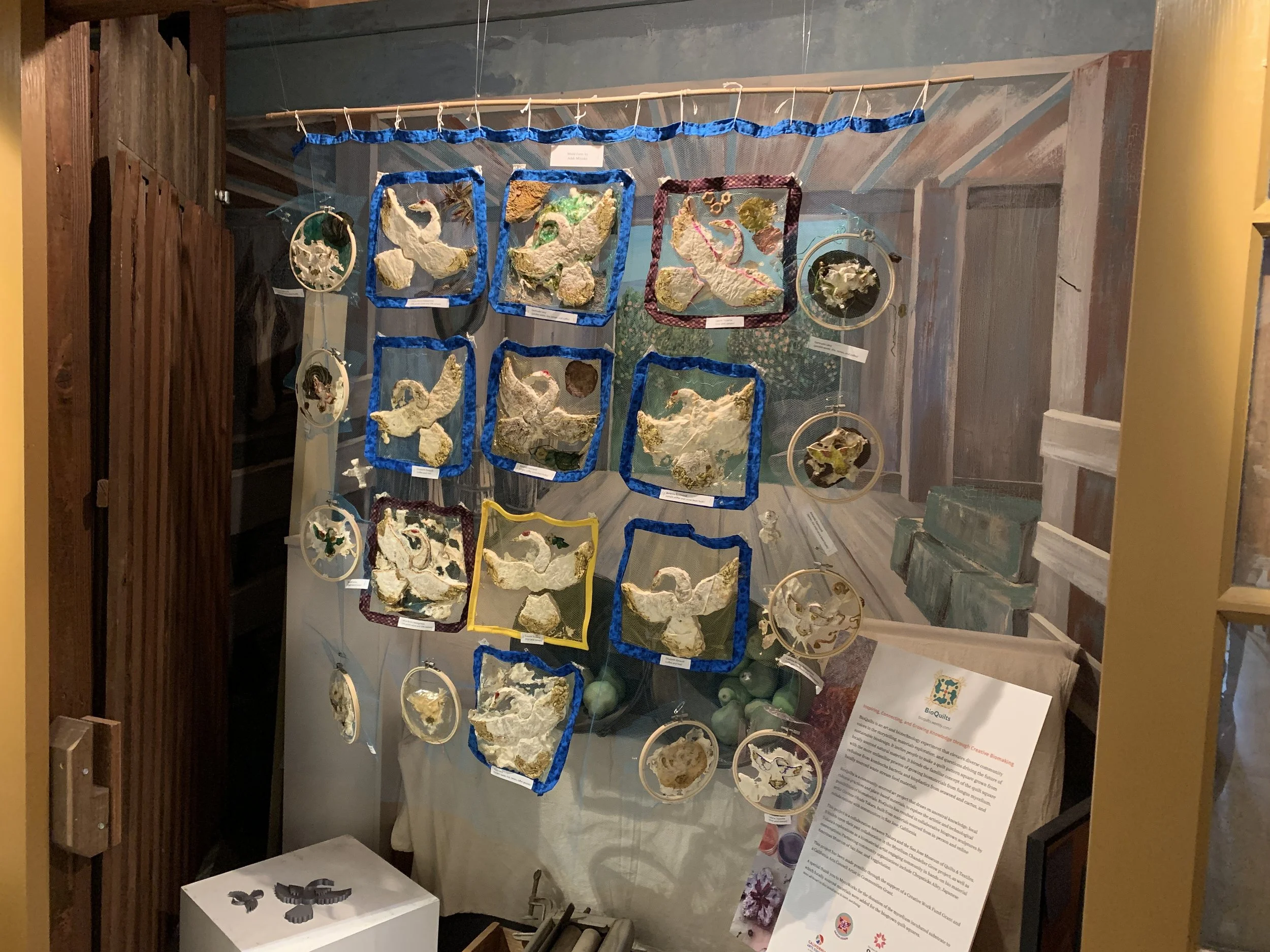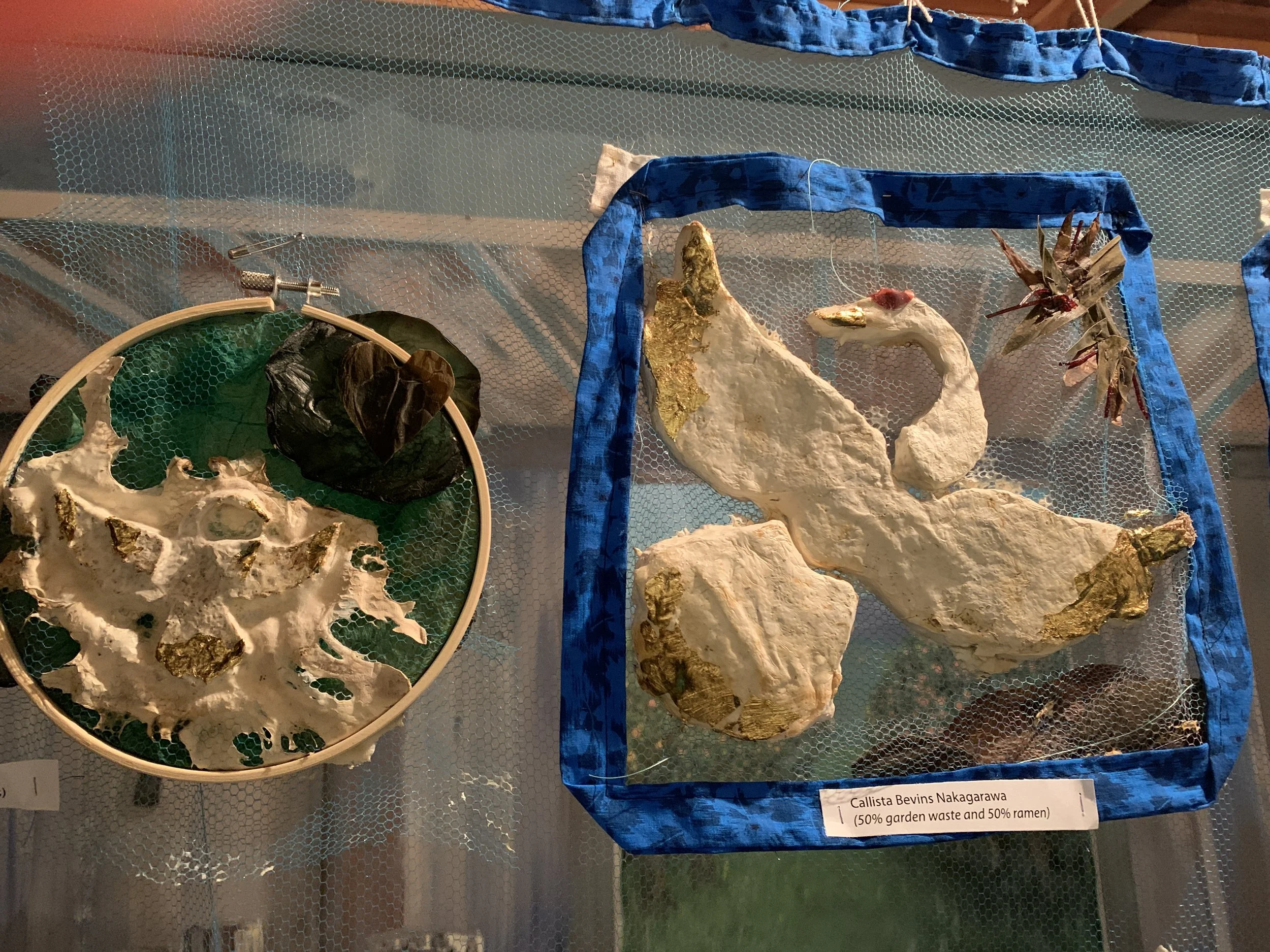The two-week global climate summit COP26 has just wrapped up and there is definitely more awareness of the importance of sustainability.
Corinne Okada Takara wants to keep that conversation going.
Corinne is an artist, educator, and community activist whose main interest is in Sustainability Design and Arts. She develops art projects that bridge the general public with the research community so that they can learn from each other in order for us to collectively come out with solutions for a sustainable future.
Corinne has been involved in the San Jose Japantown activities for over 20 years and one of her latest projects, the BioQuilt, is currently on display at JAMsj. The JAMsj Blog talked with her on how the BioQuilt came to be.
Corinne Okada Takara
Q. Were you always interested in science and biology?
Yes, it actually started very early in my life. I grew up visiting my father’s family in Hawaii. His early childhood years were on a plantation on Maui and everyone recycled and reused material. We made toys using all kinds of different plants. So, I grew up with an understanding that there is beauty and a purpose in using natural things.
I grew up moving 11 times as a child. Whenever we moved, dad would make a garden. In every garden, he would try to grow plants from Hawaii that he cherished and also local plants. I always carried that with me. Even though I was focusing on art, I saw that science and biology were really a huge expanding space and that we need to grow our knowledge about it.
BioQuilt “Cranes in Flight” is on display at JAMsj until Dec. 30, 2021.
Q. How did you start using biomaterial in your art?
Back in 2016-2017, I went to The Tech Museum in San Jose (now called The Tech Interactive) and they had an exhibit called Bio Bricks. They had a lab where they were growing mycelium (the root-like structure of mushrooms) into bricks. The mycelium can live off almost on any waste substrate. I thought that was fascinating and started thinking of what else we can do with them.
At the same time, I was interested in how to start engaging the public into the conversation on sustainability – how to sustainably grow materials that we use for science, art, and architecture. So I began bio-tinkering in my garage, experimenting with different organisms that you can grow.
[Details on how a BioQuilt is made can be found here.]
Q. What is your goal with the BioQuilt project?
My goal is to expand the general public’s understanding of science and create new spaces for the conversation between the public, youth, and scientific institutions. It is really more about the process than the outcome.
Because we are talking about microorganisms and fungus, people could get turned off. So how do we get people interested, touching things, and growing things in a playful way? I thought quilts were something that was familiar and attractive.
Q. You also emphasize the cultural aspect of this project.
Yes. To achieve the goal, I bring in the cultural perspective to make the conversation even more engaging to different communities. That’s why I reached out to different communities, including Japantown and Little Saigon in San Jose. For example, the theme of the BioQuilt at JAMsj is “Cranes in Flight” using a mold that is shaped like a crane. We used rice and ramen for the material.
There is a huge conversation going on at the research level of biomaterials and getting the general public into the conversation is really important. I want to elevate different communities with storytelling about the future of sustainability. I want to get the people thinking about it multi-generationally. The quilt will be disassembled, but the conversation will continue in their spaces.
BioQuilt close-up
On the other hand, there is a lot of opportunities to bring cultural knowledge and cultural perspective into the scientific world.
For example, agar (kanten) is an ingredient we use in Japanese cooking. Many people in science institutions don’t know that. Their only experience with agar is in their petri dish and they don’t know that you can buy it at the store. They don’t know the story of where it came from. It is important that we share the cultural knowledge because, in order for us to move into a sustainable future, we really need to reach out across the globe to the knowledge of other cultures, including the indigenous cultures.
I learned from my dad that you don’t fully know about the plant unless you know it in Hawaiian, Japanese, and the legend that goes with it.
Q. What will you be working on next?
I am currently involved in multiple organizations. One is called BioJam, which is an educational collaboration between Bay Area communities of color and students at Stanford University. The other is a biology educational initiative for youths in Salinas.
My family and I are planning to move back to Hawaii next year and so my role right now is to figure out how to hand things off. I want to start working on similar activities in Hawaii and try to build these programs there. I will start having cross conversations with the organizations that I work with in Hawaii and the ones I work with here in California.
[If you are interested to learn more about Corinne’s work on BioQuilts, here is a video.]



